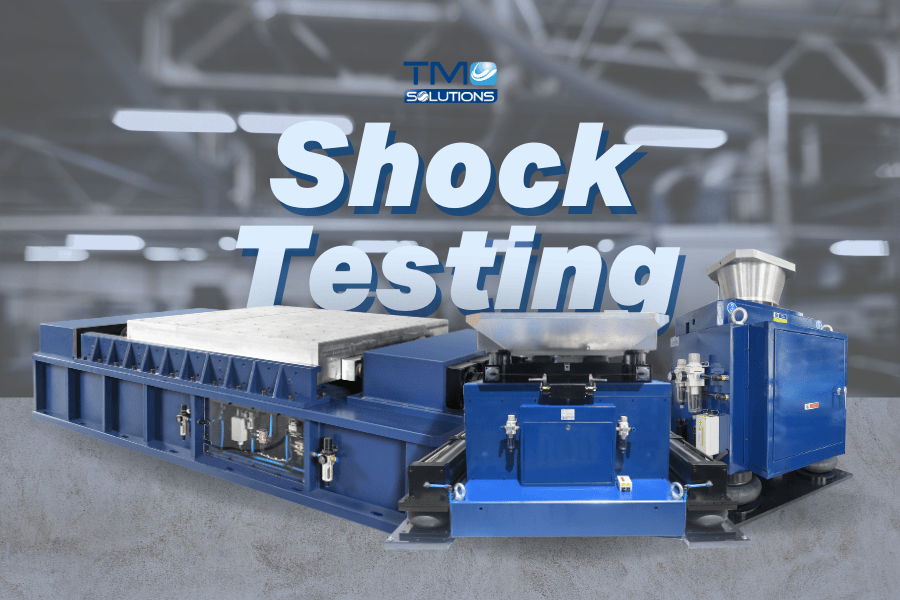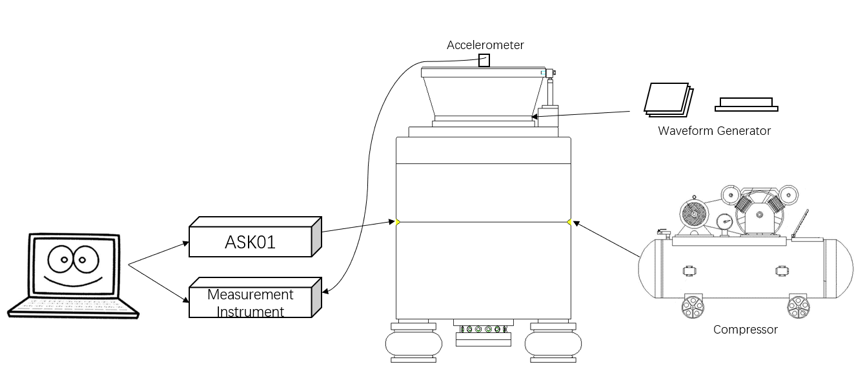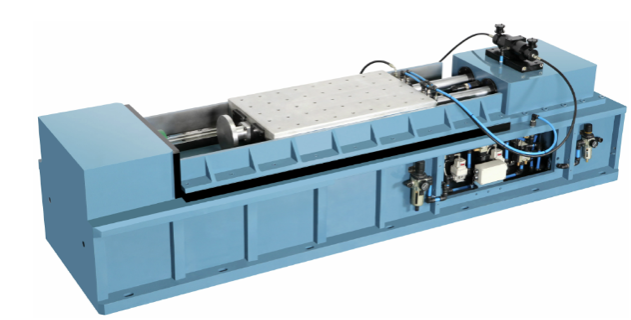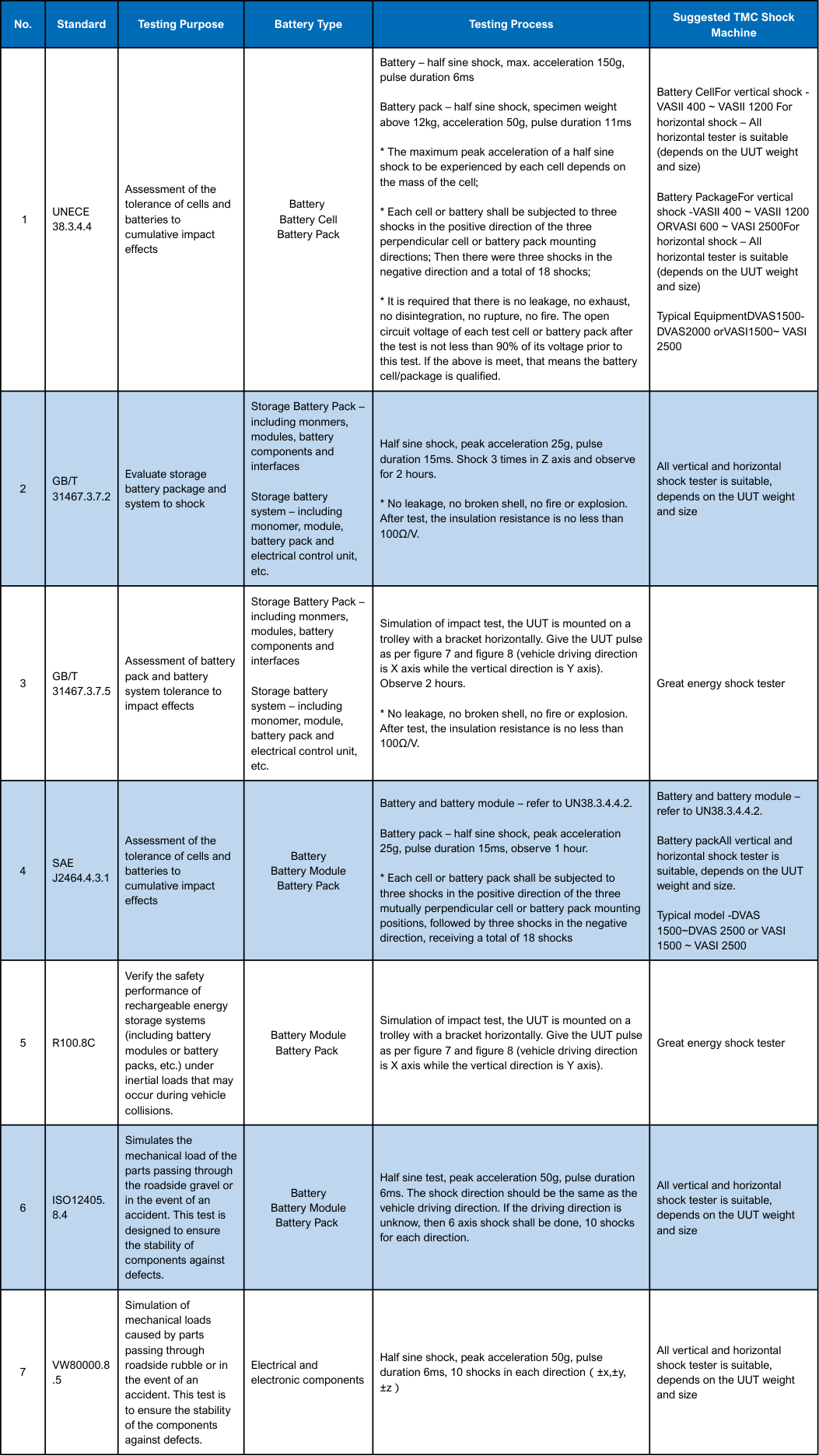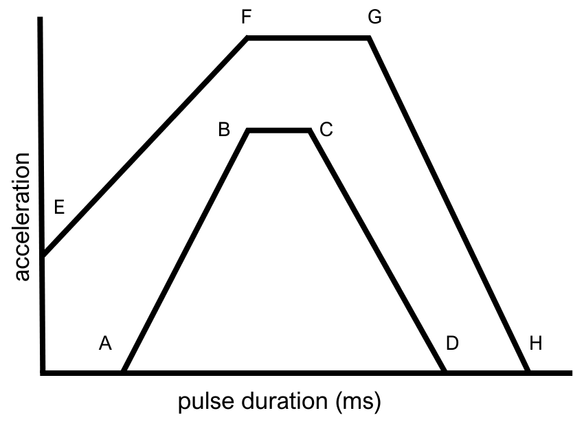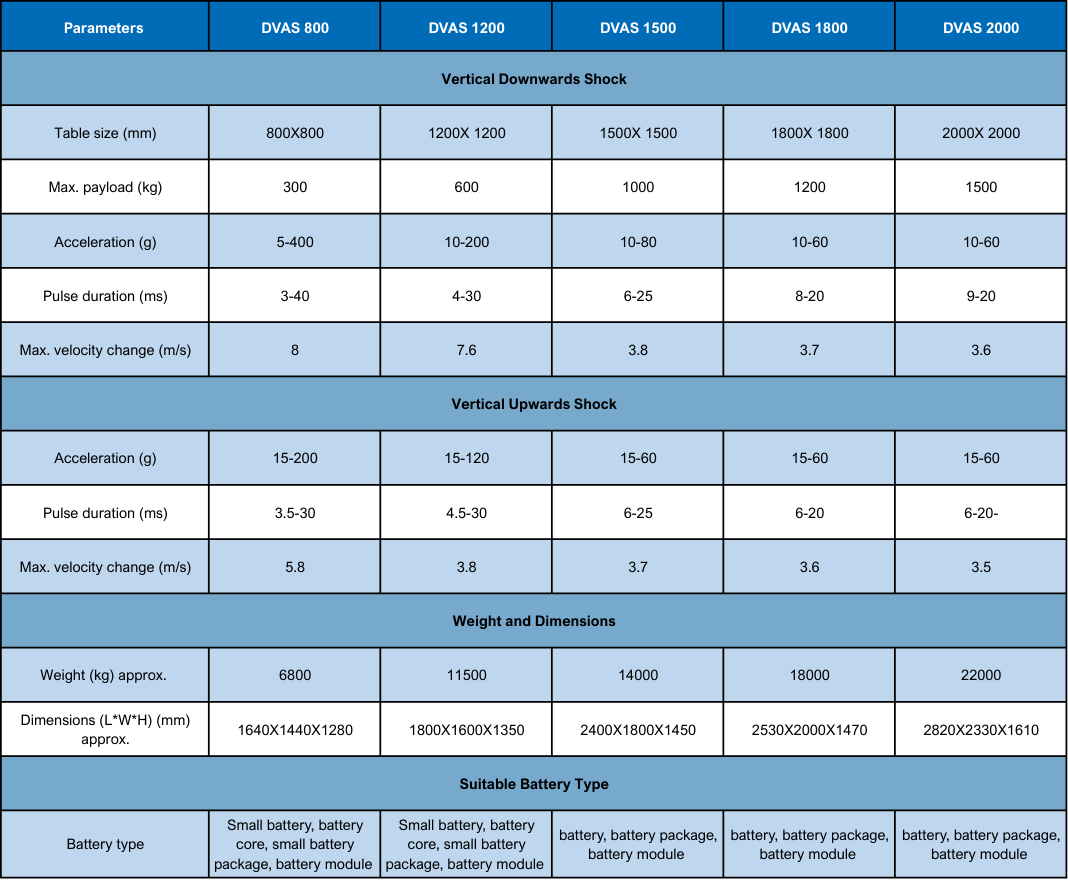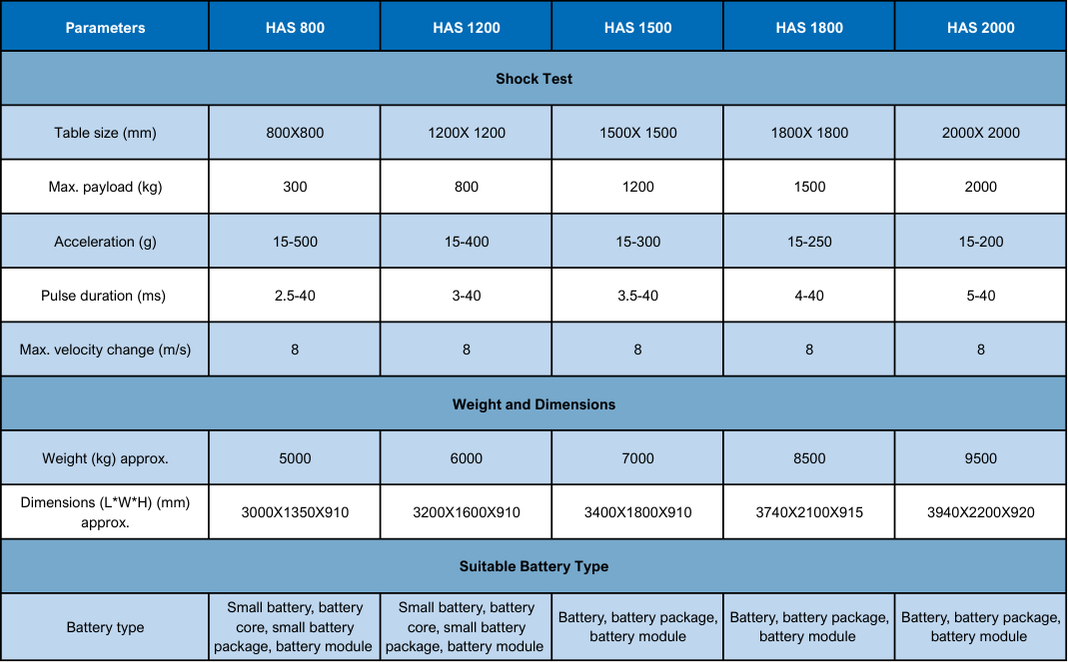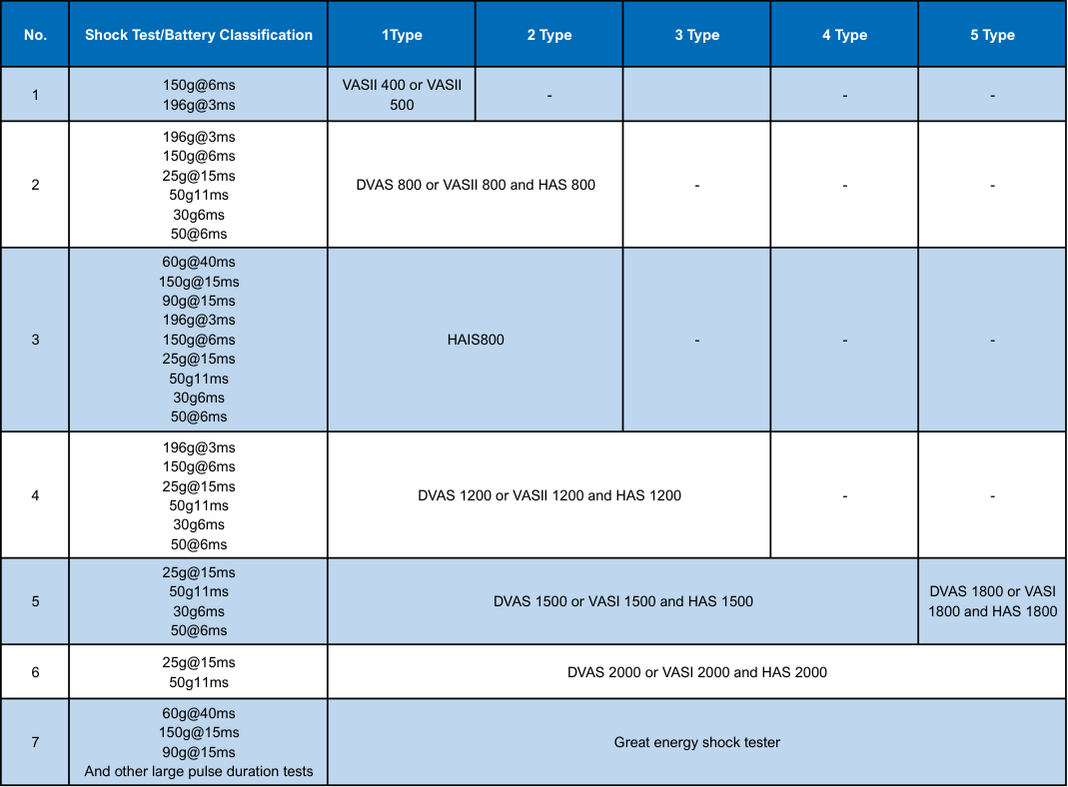Battery Testing with TMC Shock Test Systems
This overview is designed to introduce the capabilities of TMC Solutions' shock test systems for battery testing, providing a comprehensive look at our expertise in mechanical shock testing.
At TMC Solutions, we specialize in the research, development, and manufacturing of high-quality, reliable shock test equipment. Our product range spans from free-fall drop testers to pressurized shock testing systems, widely adopted across various industries including aerospace, aviation, military, electronics, automotive, new energy batteries, and packaging.
As the global market for new energy vehicles continues to expand, the need for rigorous battery testing and system performance validation grows even more critical. Automotive batteries and energy storage systems must undergo stringent tests to ensure their durability during transportation and daily use. Battery modules and packs, serving as essential power sources for electric vehicles, must demonstrate exceptional stability and safety to protect both users and equipment.
To meet the evolving safety and reliability requirements for battery cells, modules, packs, and systems, TMC Solutions has developed a dedicated series of mechanical shock test systems, along with complete customized testing solutions.
Today, TMC proudly holds 5 invention patents and 7 utility model patents for innovations in shock testing technology, reinforcing our commitment to delivering cutting-edge reliability solutions to customers worldwide.
Purpose of Mechanical Shock Testing
The primary objective of mechanical shock testing is to simulate the impact forces that a battery pack or system may experience during real-world vehicle operations. The goal is to ensure that under sudden shock loads, the battery's structural integrity remains intact — without tearing, breaking, or deforming in ways that could compromise its functionality or safety.
Typical shock scenarios include the forces exerted on the battery during rapid acceleration or deceleration, hard braking, or vehicle collisions. These events can cause the battery to shift or deform against its carrier structure. Additionally, continuous exposure to vibration and shock can lead to internal issues within a lithium battery, such as deformation of the electrode plates, separator damage, electrolyte leakage, material shedding, or fatigue fractures.
By conducting thorough mechanical shock tests, manufacturers can better replicate the real-world operating environment of electric vehicles. This critical testing step plays a vital role in safeguarding both driver and passenger safety, ensuring that battery systems perform reliably even under extreme conditions.
Shock System Overview
TMC shock machine is pneumatic driven and it adopts a unique design which makes it has advantages of high degree of automation, simple operation and easy maintenance.
It can meet all kinds of mechanical impact tests which are required by power batter and system, for example, GB/T2423.5, GJB150A.18, IEC 68-2-27, MIL STD-810 and all other kinds of battery testing standards.
One whole set of shock testing system includes Computer, ASK01 Control Box, Measurement Instrument, Accelerometer, Waveform Generator, Compressor and Shock Machine.
Composition of Shock Test System
The mechanical impact test bench is divided into vertical impact test bench and horizontal impact test bench, and the combination of the two equipment can complete the mechanical impact test in all six directions of the specimen.
TMC Solutions - Small Vertical Shock Tester
TMC Solutions - Large Vertical Shock Tester
TMC Solutions - Medium Vertical Shock Tester
TMC Solutions - Bi-direction Vertical Shock Tester
TMC Solutions - Horizontal Shock Tester
Key Features of TMC Shock Test Systems
High-Strength Aviation Aluminum Table: The shock table is constructed from premium aviation-grade aluminum, offering exceptional strength, durability, and excellent frequency response characteristics for high-precision testing.
Environmentally Friendly Air Pressure Drive: TMC’s impact test systems utilize a full air pressure drive mechanism, making them truly green, explosion-proof, and environmentally friendly. The compact overall design ensures easy maintenance and enhanced reliability.
Precision-Guided Impact Table: The table is guided by one or multiple high-precision, chrome-plated shafts. This design minimizes friction and energy loss during impact, resulting in highly accurate and repeatable test results.
Rapid Reaction Pneumatic Brake System: A pneumatic push fluid booster brake quickly locks the impact table with minimal reaction time, preventing secondary impacts and ensuring clean, consistent shock pulses.
Advanced Isolation System: An integrated isolation system, comprising multiple shock absorbers and specialized damping devices, effectively absorbs and gradually releases impact energy. This minimizes potential damage to laboratory floors, allowing most TMC shock testers to be installed foundation-free.
Safe, Low-Pressure Operation: All systems operate on low-pressure compressed air (working pressure ≤ 0.9 MPa), offering a safe, simple, and maintenance-friendly testing environment.
Unobstructed Table Design: With no guide shafts obstructing the perimeter of the table, it’s easy to install test specimens and integrate the system with climatic chambers for combined environmental and mechanical testing.
Battery Testing Standards for Shock and System Selection Guide
This section provides an overview of various battery testing standards and highlights how TMC Shock Test Systems are designed to meet or exceed these industry requirements.
Additionally, it offers a brief selection guide to help you choose the right shock tester based on your specific testing needs.
As new battery testing standards are introduced, this guide will be regularly updated to ensure you have access to the latest information.
If you require testing solutions not covered in this chapter, please feel free to contact the TMC Solutions team — we are ready to help you find the best equipment and support for your testing challenges.
Battery Testing Standards
Impact Simulation Table
Acceleration & Pulse Duration Diagram
Shock System Selection for Battery Testing
The below table is only a general selection guide on TMC shock machine and may not cover all models and standards. The table can be referred to when you have no idea of what shock tester to choose, or you can consult TMC for more professional suggestions.

